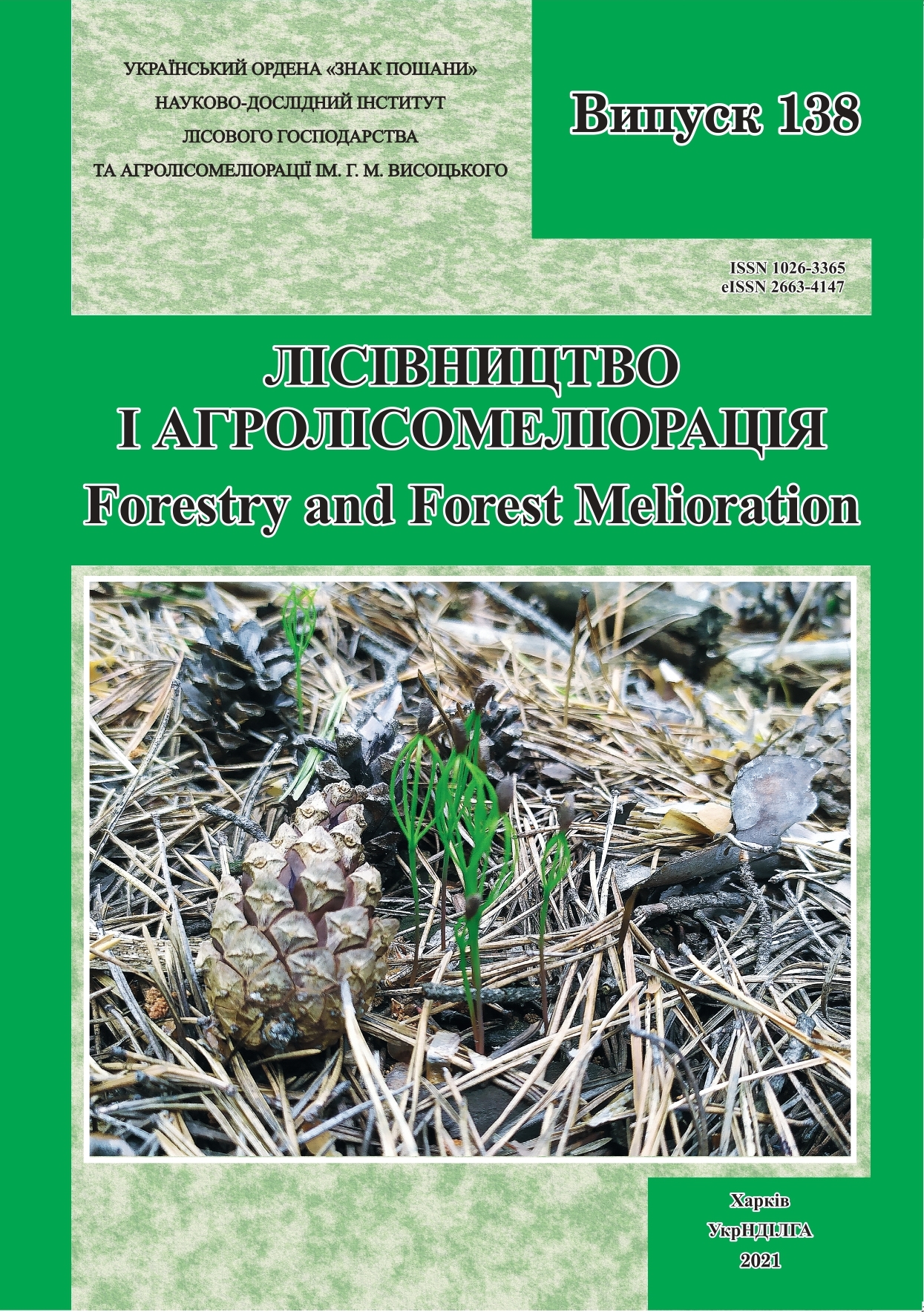Abstract
Introduction
In order to effectively protect pine stands from damage by foliage browsing insects, their foci should be revealed and inspected in a timely manner. Such foci occur in the stands with the most favourable ecological conditions for these pests. Ecological conditions are defined first of all by the type of forest site conditions, stand age, relative density of stocking and a participation of favourable tree species. A stand age always increases with time. Relative stocking density and stand’s composition can change in result of natural or anthropogenic impact. The outbreaks of stem pests of last decades, which were followed by the selective or clear sanitary felling, was the important factor. Outbreaks of these pests in Zhytomyr Region were registered in 1953–1955, in the middle of the 1970s, 80s and 90s, in 2000 and 2011–2013. However, the last outbreak had the lowest intensity and duration. We suggest it happened due to a change in the attractiveness of the stands for these insects.
The aim of the research was to assess a change for 2010–2019 in the attractiveness of the stands of the Korosten Forest & Hunting State Enterprise for the most common foliage browsing insects: Diprion pini (Linnaeus, 1758), Neodiprion sertifer (Geoffroy, 1785) (Hymenoptera), and Dendrolimus pini (Linnaeus, 1758) (Lepidoptera).
Materials and Methods
We analysed the Ukrderzhlisproekt Production Association database (as of 2010 and 2019) for the Korosten Forest & Hunting State Enterprise of Zhytomyr Regional Administration of Forest Management.
Forest subcompartments with Pinus sylvestris L. as the main forest forming species were selected. The area of the stands was evaluated for each type of forest site conditions, for age intervals ? 20 years, 21–30, 31–40, 41–50, 51–60, 61–70, 71–80 and > 80 years, for intervals of the relative density of stocking ? 0.4; 0.5; 0.6; 0.7 and ? 0.8, and for different percentage of Scots pine in the forest composition. The score of the corresponding parameters was evaluated for each subcompartment by the method of V. Meshkova (2009) as well as the sum of area with a very high and high attractiveness for particular pests. The average score of the outbreak threat for each parameter (type of forest site conditions, age, relative density of stocking, and Scots pine percentage in the stand composition) was calculated as the weighted average of the area of stands with each level of threat.
Results and Conclusions
The study showed that in 2010–2019 the area of Scots pine stands in the Korosten Forest & Hunting State Enterprise decreased by 1,036.7 ha, or by 9.3 %. The attractiveness of stands for the formation of foliage browsing insects’ foci, determined by the type of forest site conditions and relative density of stocking, tended to increase, while that determined by age tended to decrease. According to the set of indicators, a high attractiveness of stands for Neodiprion sertifer was determined on the area of 65.4 ha, for Diprion pini on the area of 40.7 ha, and for Dendrolimus pini on the area of 61.7 ha.

This work is licensed under a Creative Commons Attribution 4.0 International License.
